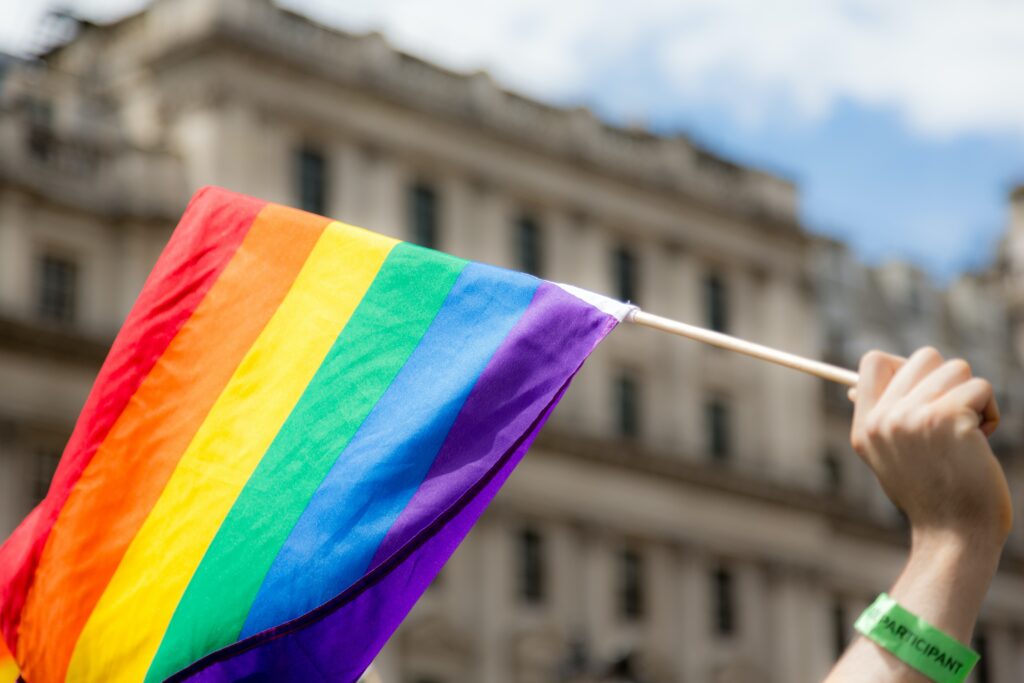Ban the Gay and Trans Panic Defense

Image courtesy of Ian Taylor is unmodified and licensed under Unsplash’s Content License.
In 1988, Matthew Shepard, a 21-year-old college student in Laramie, Wyoming, was violently beaten, tortured, and left to die by the side of a road. The defense lawyer claimed that the attacker was driven to temporary insanity by alleged sexual advances from Shepard.
Using a victim’s gender or sexual identity as a defense for murder is an assault on the dignity and human rights of LGBTQ+ people.
The gay and trans panic defense is banned in 17 states. The American Bar Association urges its ban nationwide and in all local, state, and Tribal jurisdictions.
Actions
1. Email your state lawmakers
Ask your state lawmakers to support legislation to ban the gay and trans panic defense.
- Look up if your state bans the gay and trans panic defense.
- Find your state senator and representative online here.
- Use or modify our email template to send to your state lawmakers.
Learn more:
Matthew Shepard
In 1998, Matthew Shepard, a 21-year-old college student, was violently beaten, tortured, and left to die by the side of a road near Laramie, Wyoming. Rescuers took him to a hospital in neighboring Colorado, where he died six days later from profound head injuries.
The two suspects in the attack were arrested and charged with first-degree murder.
The defense lawyer claimed that one of the attackers was driven to temporary insanity by alleged sexual advances from Shepard.
This is known as the gay and trans panic defense. This legal argument asks a jury to rule that a same-gender sexual advance is enough of a provocation to excuse a defendant’s violent reaction, even including murder. It is not a free-standing defense to criminal liability but a legal tactic used to support other defenses.
The two perpetrators were both convicted and sentenced to two consecutive life sentences for the heinousness of their crime. But the gay and trans panic defense gained notoriety – and popularity. It has been used in hundreds of cases across the country to defend people accused of attacking and even murdering gay and transgender people.
The Panic Defense in Court
The panic defense has been used in three ways to reduce the charge of murder to the lesser charges of manslaughter or justified homicide.
- The insanity or diminished capacity defense contention is that the victim’s sexual orientation or gender identity is to blame for triggering the defendant’s panic reaction.
- In the provocation defense, the argument is that the victim’s “non-violent sexual advance” is sufficiently provocative to induce the defendant to kill them, behavior which, on its own, is not illegal or harmful but is only considered ‘provocative’ when it comes from an LGBTQ person.
- In the final variation, defense of self-defense, the claim is that because of the victim’s sexual orientation or gender identity, the victim must have been about to cause the defendant serious bodily harm and the attacker is justified in using violence. Despite the removal of “gay panic disorder” from the DSM by the American Psychological Association in 1973, legal defense teams continue to use it.
Examples of Cases
In the 1954 murder of William T. Simpson in North Miami, FL, the defendants claimed that they shot Simpson, a gay man, while “resisting his advances,” thus utilizing the provocation defense. Even though the defendants were criminals who frequented that area of highway to rob drivers, and intentionally targeted homosexual victims, the defendants were convicted of manslaughter rather than first-degree murder.
In the 1998 murder of Scott Amedure by Jonathan Schmitz, Amedure revealed that he had a crush on Schmitz while on the “Jenny Jones” show. After a friendly evening together, Amedure left Schmitz a provocative note. The defense again utilized the provocation defense, citing that the nature of the note and Amedure’s homosexuality were enough to send Schmitz into a panic and kill Amedure. Schmitz was convicted of the lesser offense of second-degree murder rather than first-degree murder.
Source: https://www.americanbar.org/groups/crsj/publications/member-features/gay-trans-panic-defense
The American Bar Association and the Panic Defense
The American Bar Association, an organization of nearly 200,000 attorneys, regards the gay and trans panic defense as particularly egregious. In 2013, the ABA passed Resolution 113A, urging “federal, Tribal, state, local, and territorial governments to take legislative action to curtail the availability and effectiveness of the ‘gay panic’ and ‘trans panic’ defenses. These defense strategies seek to excuse the crimes by saying that the victim’s sexual orientation caused their assailant’s violent reaction to them.”
Since that 2013 ABA resolution, eleven states have banned the defense – but it remains legal and can be used in 39 states throughout the country.
The ABA continued to urge the ban in 2020: “This legally sanctioned discrimination against one’s sexual orientation and gender identity must cease.”
Federal Prohibition of the Panic Defense
At the federal level, Sen Edward Markey and Rep. Joseph Kennedy introduced the Gay and Trans Panic Prohibition Act in 2018 and again in 2019. The bill expressly noted that “continued use of these anachronistic defenses reinforces and institutionalizes prejudice … and marks an egregious lapse in the march of the United States toward a more just criminal justice system; the antiquated notion that LGBT lives are worth less than others and to reflect modern understanding of LGBT individuals as equal citizens under law, gay and trans panic defenses must end.”
The bill has not passed at the federal level.
The LGBTQ Community and Hate Crimes
People who identify as LGBTQ comprise about 5% of the U.S. population, according to the Williams Institute, UCLA School of Law. However, the FBI documents that nearly 20% of hate crimes are directed against individuals because of their sexual orientation or gender identity and the proportion continues to rise, making a small minority of people highly vulnerable to extremely violent attacks.
LGBTQ Rights Are Human Rights
In the aftermath of the devastation of World War II, global leaders created the Universal Declaration of Human Rights. This Declaration affirms the equality of all people, everywhere, based on their immutable personal characteristics of race, religion, ethnicity, national origin – and sex.
Countries, laws, and organizations around the world define sex to include sexual orientation and gender identity. These characteristics define the essence of our human existence and we are all guaranteed equality before the law because of, and even despite, who we are.
The gay and trans panic defense is dangerous,
- Yet it is legal in 34 states.
- It has been used to justify murder nearly 200 times around the country.
- It has resulted in reduced sentences or acquittals for nearly half of those murders.
We hope that every jurisdiction, from the federal to the municipal, will ban the gay and trans panic defense to honor the memory of Matthew Shepard and all others who have been murdered simply because of who they are – and to send the message that we will not tolerate hate.
Updated September 2023.


